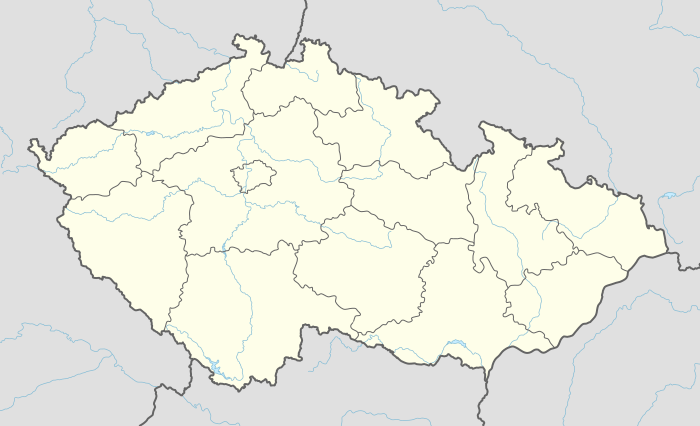Lesná (Tachov District)
Lesná (German: Schönwald) is a village and municipality (obec) of Tachov District in Plzeň Region, Czech Republic.
Lesná | |
|---|---|
Municipality | |
St Nicholas Church | |
 Flag  Coat of arms | |
 Lesná | |
| Coordinates: 49°44′34″N 12°32′54″E | |
| Country | |
| Region | Plzeň |
| District | Tachov |
| Area | |
| • Total | 84.29 km2 (32.54 sq mi) |
| Elevation | 643 m (2,110 ft) |
| Population (2006) | |
| • Total | 509 |
| • Density | 6.0/km2 (16/sq mi) |
| Postal code | 347 01 |
| Website | http://www.obeclesna.cz |
Geography

Lesná lies in the Upper Palatine Forest (Český les) mountain range at 643 m (2,110 ft), close to the border with Germany. It is located approximately 9 kilometres (6 mi) south-west of Tachov, 60 km (37 mi) west of Plzeň, and 140 km (87 mi) west of Prague. Southeast of the village is the source of the Kateřinský potok, the headwater of the Pfreimd River.
The municipality includes the cadastral communities of Bažantov (Wosant), Česká Ves u Lesné (Böhmischdorf), Jedlina (Neu Losimthal), Lesná u Tachova, Pavlův Studenec 1 (Inselthal), Písařova Vesce (Albersdorf), Stará Knížecí Huť (Altfürstenhütte), and Zahájí u Lesné (Waldheim).
The municipal area comprises extended woodlands stretching up to the neighbouring German municipalities of Flossenbürg and Georgenberg in the west, where several former villages have been abandoned after the implementation of the Iron Curtain. Since 1997 parts of the forests are protected as the Křížový kámen nature reserve.
History
The Bohemian settlement was first mentioned in a 1349 deed. It is one of the oldest villages in the formerly inaccessible mountain region, located on a trade route from the Kingdom of Bohemia into the Bavarian Upper Palatinate region.
In the late 16th century, Paul Schürer from Saxony ran a glass factory at Zahájí and in 1592 received the noble title von Waldheim from the hands of Emperor Rudolf II in his capacity as King of Bohemia. In 1607 Schürer purchased large estates in the remote area, which were colonised by German-speaking settlers, later referred to as Sudeten Germans.
Incorporated into the Nazi Reichsgau Sudetenland from 1938 until the end of World War II, the German population was expelled after the war. Zahájí, Česká Ves, and other villages immediately at the frontier with West Germany were abandoned and became a restricted zone.
References
| Wikimedia Commons has media related to Lesná (Tachov District). |